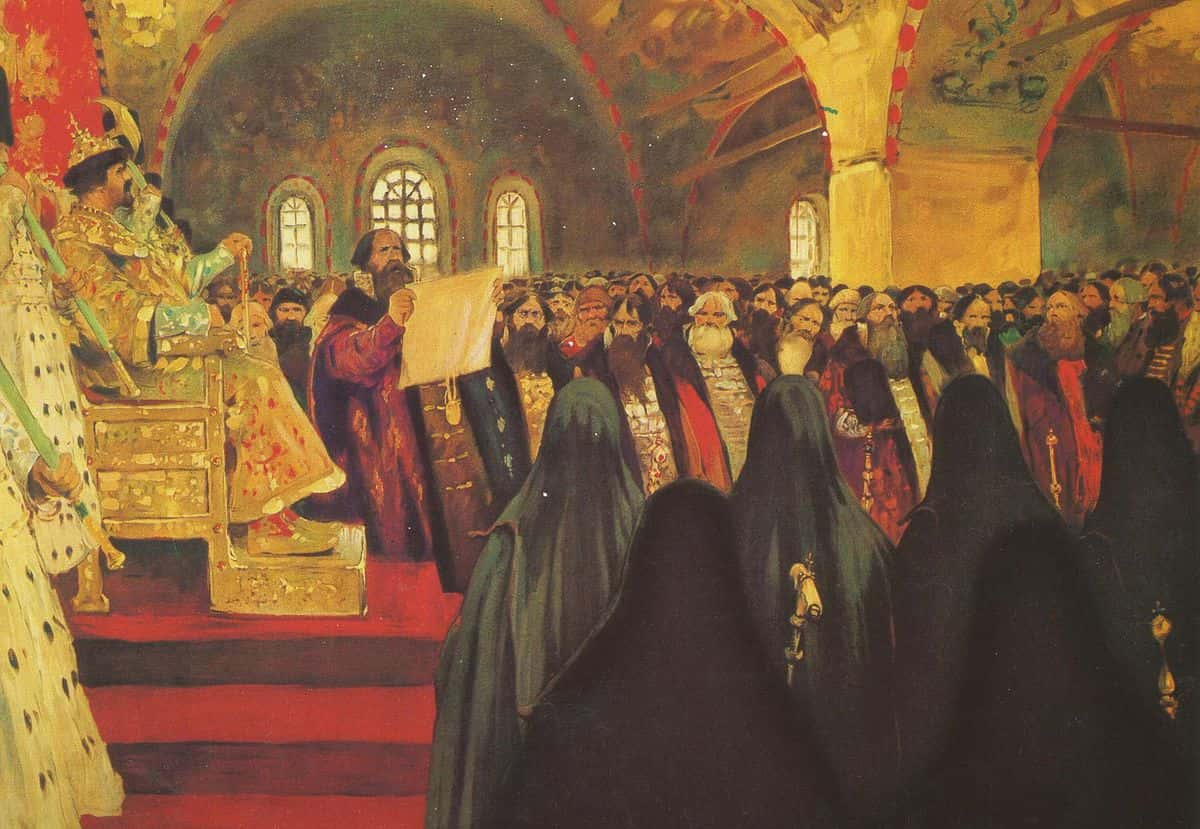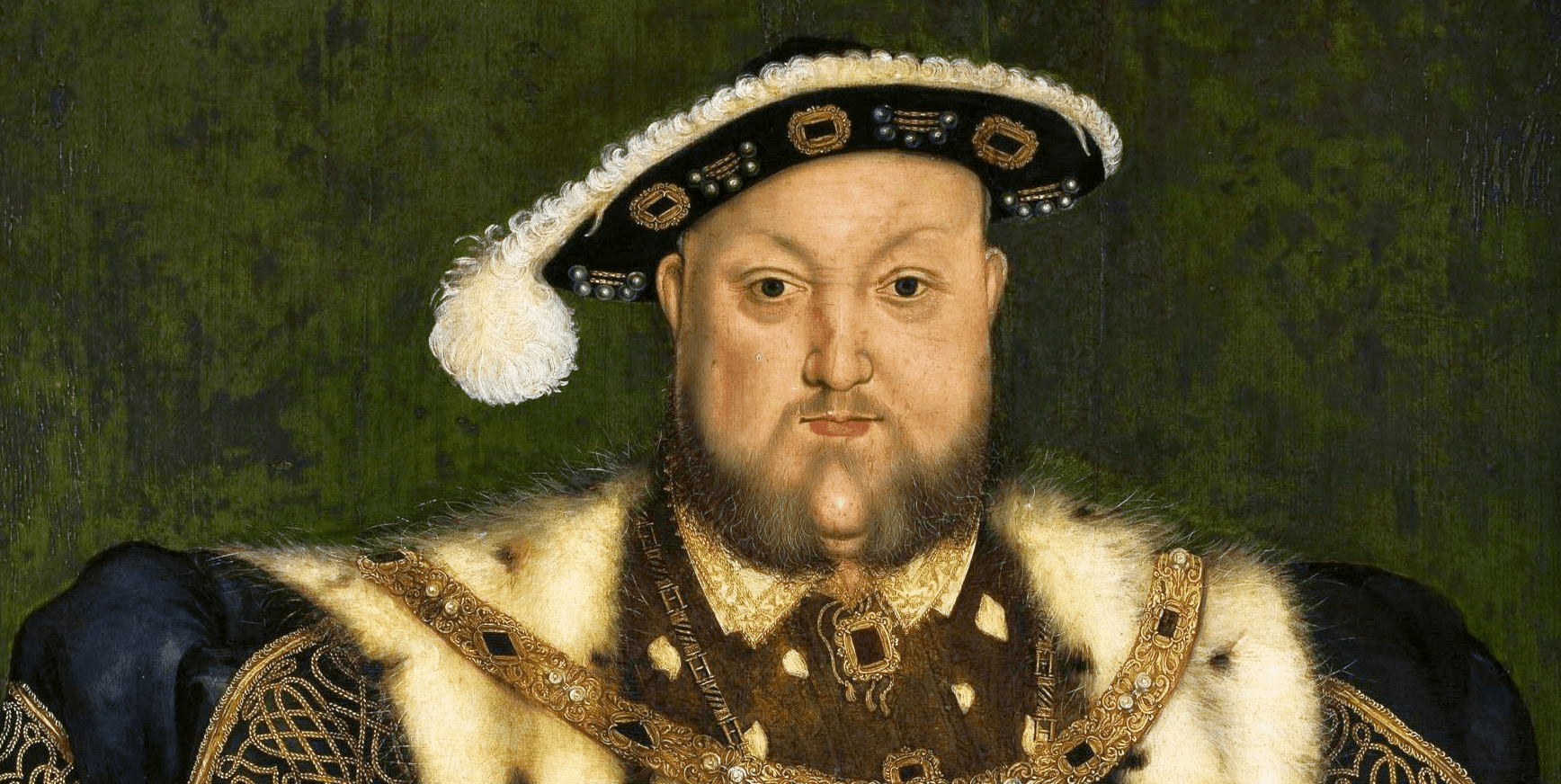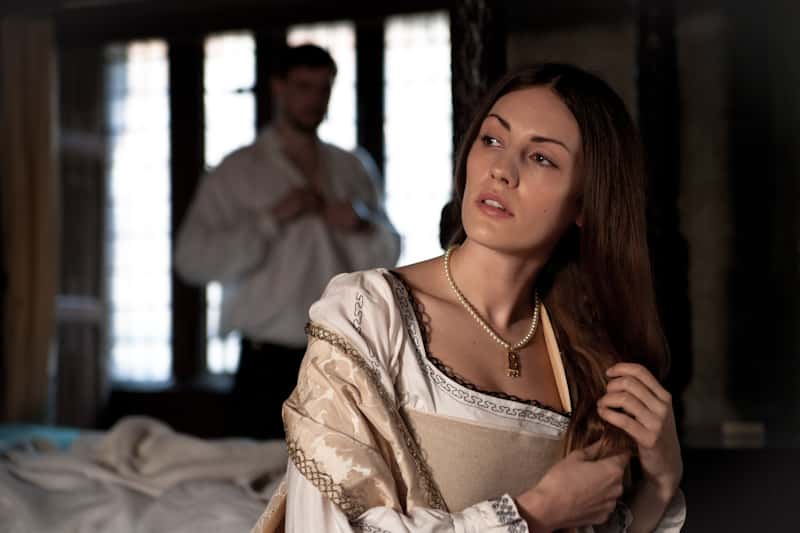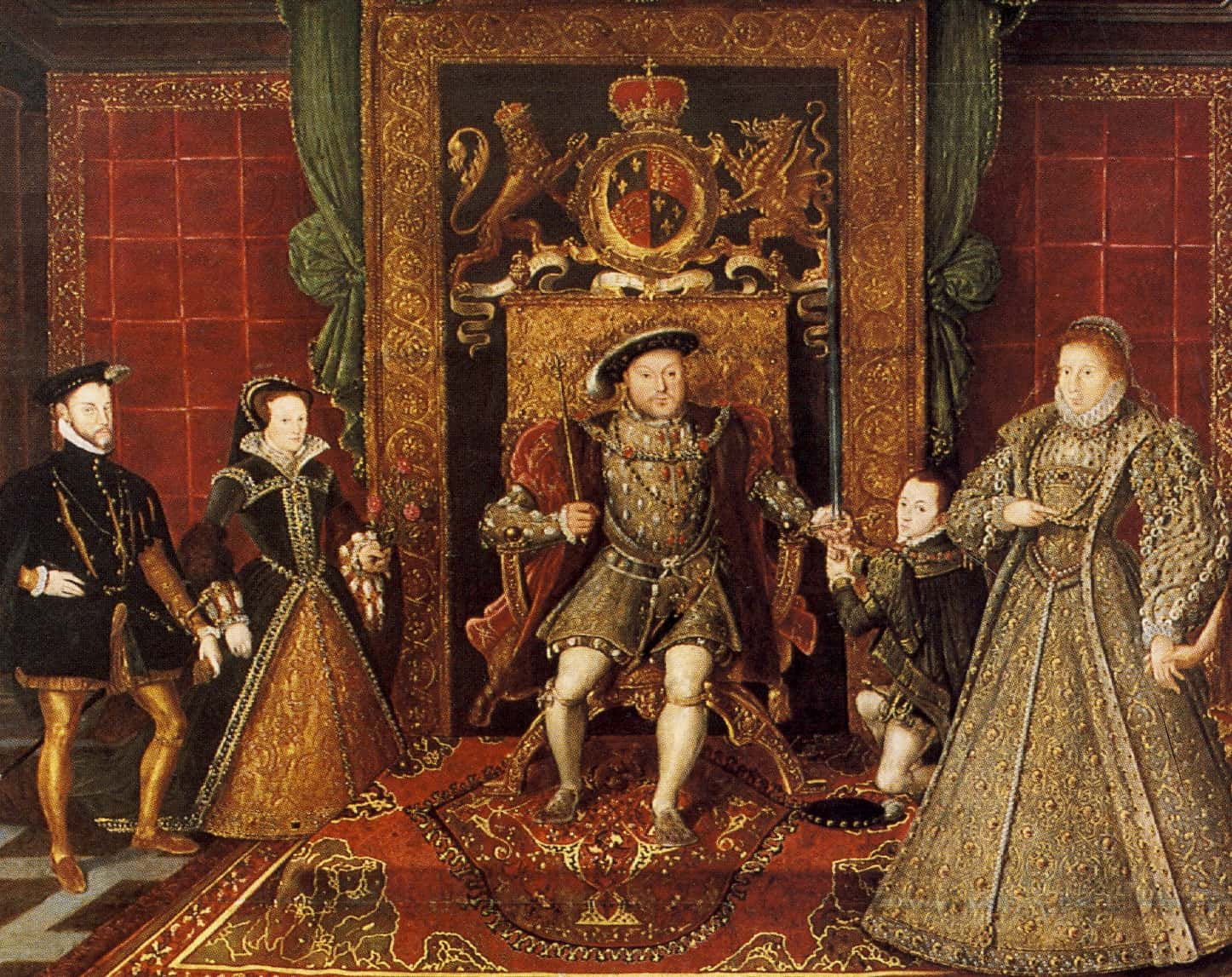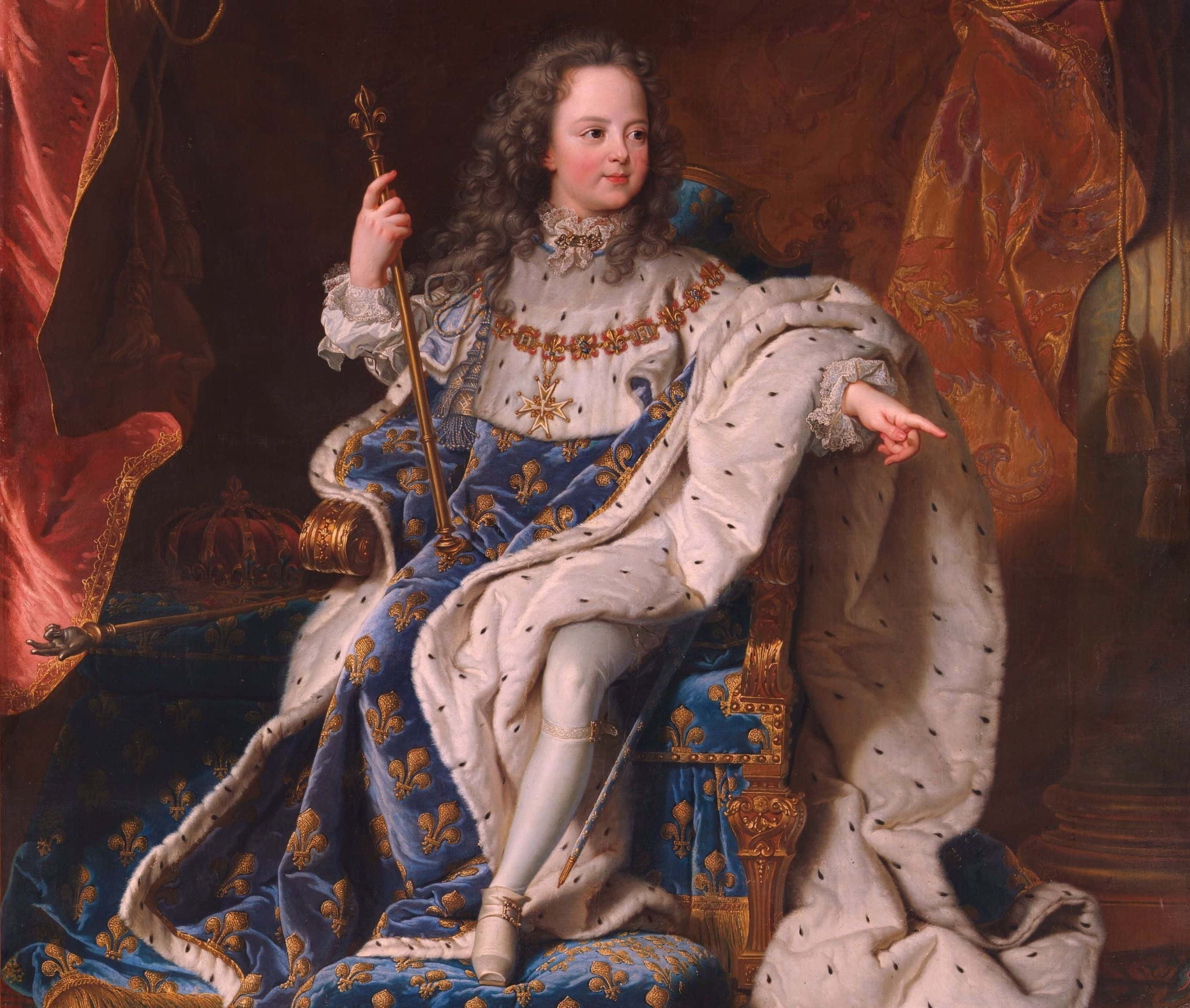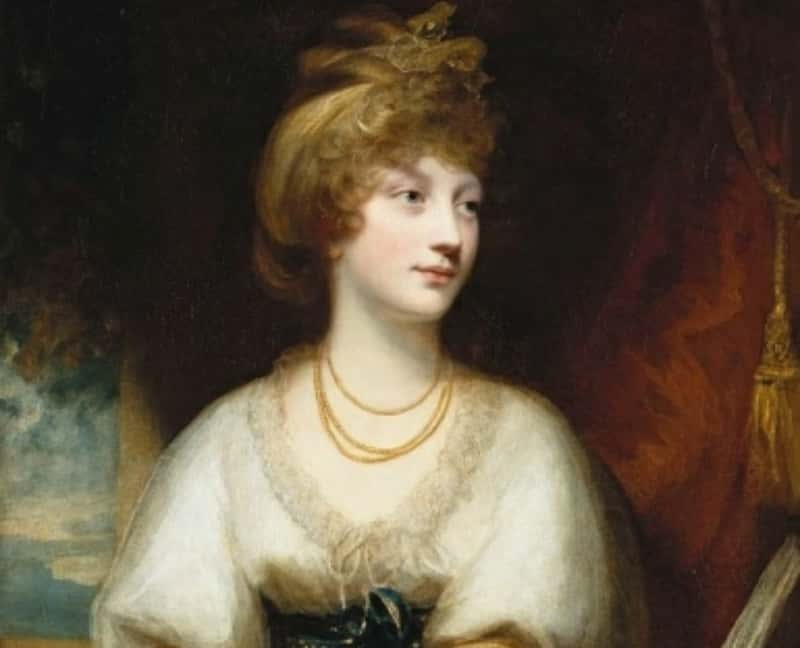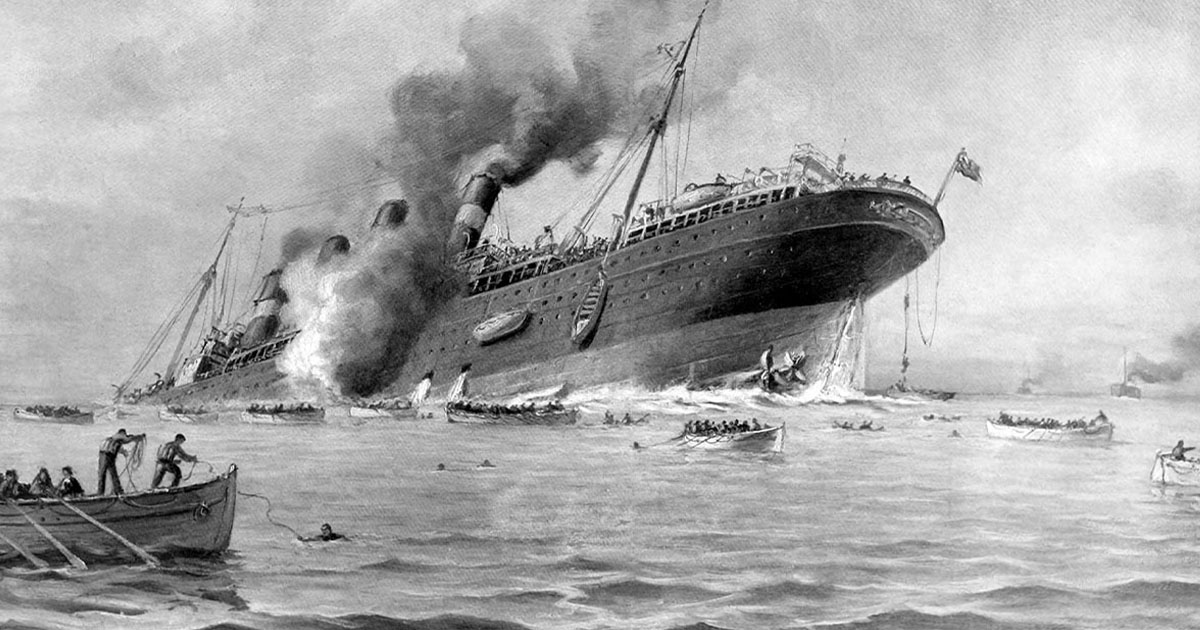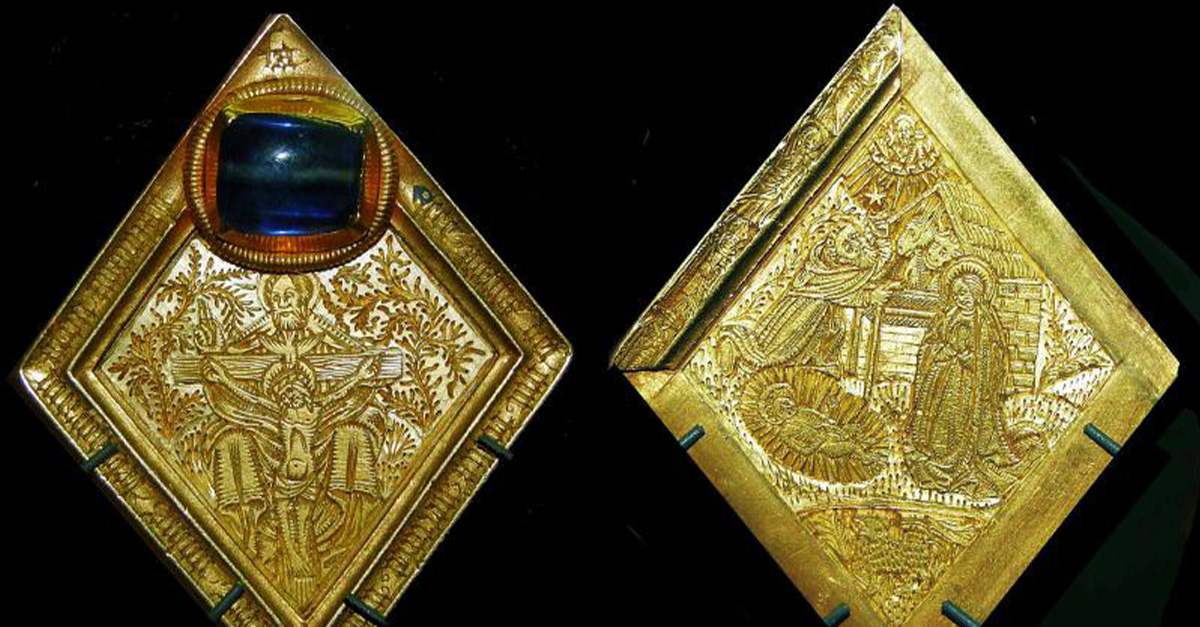Alexander the Great. Caligula. King Henry VIII. Louis "The Sun King" XIV. Throughout history, powerful men have done dark, scandalous things. From Rome to England to France and beyond, here are facts about the most ruthless, strange, and fascinating kings, monarchs, and rulers to have ever walked this Earth.
1. The Boy King
King Tut was literally a child when he became Pharaoh. When his father passed, he was only seven, and he became king two years later at nine years old.

2. Seniority
In the days of King Tut, it was nothing unusual to marry in the (very close) family to maintain bloodlines. In fact, his mother and father were brother and sister, which also made his mother his aunt. When Tut was about nine, he married his half-sister Ankhesenamun, who was 13. But wait, it gets a whole lot grosser than that.
Before Ankhesenamun was married to Tut, there is evidence that she was actually married to her own father.
3. Frail Boy
Inbreeding might have seemed like a good idea to the ancient Egyptians, but Tut was proof of why it’s not. According to recent DNA testing, Tut had malaria, a club foot, and used a cane to walk. Let’s just say he wasn’t participating in any strength games.
4. Twin Tragedies
Based on evidence from King Tut's tomb, he and his wife had two daughters: the remains of twin babies were found in his burial place. However, both of their daughters were tragically stillborn, and DNA testing revealed that at least one of them had skeletal deformities.
5. Seeking Answers
Whenever someone, particularly a king, dies young for no apparent reason, there are always questions. Over the years, there has been speculation as to whether or not Tut was hurt, and there was certainly no shortage of suspects. Other theories suggested a chariot accident (possible), a hippo accident (more plausible than you’d think), or an old-fashioned combination of malaria, a broken leg, and a bone disorder.
Whatever the cause, it remains one of history’s most enduring mysteries.
6. Ancient Car Crash
In King Tut’s time, chariots were the primary method used to carry kings around, and recent evidence suggests that Tut was in a terrible chariot crash shortly before he passed. Similar to a car accident, the crash shattered his rib cage, damaged many of his internal organs (including his heart), and broke his pelvis.
7. Eternal Arousal
Studies of King Tut’s mummy revealed something unusual about the way he was embalmed. His "nether-region" was mummified at a 90-degree angle, which was intended to mimic the regenerative powers of the god Osiris. As far as researchers know, Tut is the only mummy ever discovered to be buried with an erection.
8. The Wrath of a Mummy
The myth of the Pharaoh’s Curse is well known around the world, but it's largely baseless, though Egyptian tombs do sometimes have inscribed curses inside their walls. The flames of the myth were fanned when novelist Marie Corelli referred to the superstition shortly after Lord Carnarvon (who was at the opening of Tut's tomb in 1922) got an infection from a mosquito bite.
When the infection later ended him, people were more than happy to believe that she was correct, and the curse was real.
9. Great, Just Great
Alexander III of Macedon, otherwise known as Alexander the Great, was crowned at the age of only 20, and spent most of his reign leading army campaigns. By age 30, he’d created a vast empire that stretched from Greece to India, and he’s considered one of the greatest army leaders in history.
10. Going Pro
One of Alexander the Great’s favorite tactics was the use of the Macedonian phalanx, which is a strategic formation that consists of a block of infantry standing shoulder to shoulder in rows that are several feet deep. Alexander and his father made sure to train their infantry mercilessly, making them into the perfect army.
11. Both Sides of the Blanket
Throughout history, there have been many questions about Alexander’s sexuality. Despite having three wives, he was also rumored to have had relations with at least one man. Today we might call Alexander queer, if not gay. For the Ancient Greeks, gender often wasn’t a factor in their choice of a partner, and was seen as personal taste.
As a result, men often had intimate relations with other men or teenaged boys, and also still had relations with women and took wives. Gruppe 5, Alexander the Great (2014)
Gruppe 5, Alexander the Great (2014)
12. A Man and His Horse
When Alexander was 10 years old, a trader brought his father King Philip a horse. The horse proved impossible to tame, and his father sent it away. Alexander, however, noticed that the horse was afraid of its shadow, and pleaded for permission to tame the beast. Much to the joy of Philip, he did. It was the beginning of one of the most intense relationships of Alexander's young life.
As a reward for his courage and ambition, Philip bought his son the horse, which Alexander named Bucephalus, or “Ox Head". Bucephalus served Alexander fiercely in his most formative years. When the horse passed in battle, Alexander lovingly named the city Bucephala after him.
13. A Pleasant Odor
In historian Plutarch’s book Lives of the Noble Greeks and Romans, Plutarch reported that Alexander possessed a “most agreeable odor,” and that his breath and body perfumed his clothes.
14. Love at First Sight
According to some historical reports, Roxanne, Alexander the Great’s first wife, was possibly the only woman he ever loved. There are different versions of their meeting. In one account, he came across Roxanne among some of his captives after their unconditional surrender, and he immediately fell in love with the alluring young girl.
In Plutarch’s version, he first sees her among the dancers at a banquet held in in his honor immediately after a victory. Gruppe 5, Alexander the Great (2014)
Gruppe 5, Alexander the Great (2014)
15. Man of Many Names
Alexander the Great was known by a number of other nicknames in his lifetime. He was often called the Accursed, the Conqueror of the World, the Philosopher-King, and the Madman of Macedonia, among others. Gruppe 5, Alexander the Great (2014)
Gruppe 5, Alexander the Great (2014)
16. Undefeated
From his first skirmish at age 18 until his passing, Alexander was undefeated in battle. He had a reputation for leading his men with great speed, which allowed the smaller forces to reach and break enemy lines before his opponents were ready. In 334 BC, Alexander fortified his own kingdom in Greece, and then crossed into Asia, where he won several more battles.
His tactics are still studied in army colleges today.
17. The Sport of Drinking
One day, Alexander the Great decided to organize an Olympics in India to honor a fallen comrade. Not being familiar with Greek sport, Alexander changed his plans, and created a booze-drinking contest instead. Unfortunately for the contestants, none of them were used to drinking booze, and many of them passed on the spot.
The winner, a Greek soldier by the name of Promachus, drank the equivalent of 13 litres of booze and passed a few days later.
18. How to End a God
Caligula was a sadistic and perverse tyrant of a Roman Emperor who ruled from 37-41 AD. He ended men for pleasure, had intimate relations with their wives, demanded to be worshipped as a living god, and caused a financial crisis with his extravagant and unnecessary spending. Of course, all these actions were just an average Tuesday for Caligula.
Many people also believe that he built a two-mile floating bridge on the sea just so he could ride across it on horseback. He even allegedly had conversations with the moon.
19. Little Boots
When the young emperor was growing up, any time his father brought him along on campaign, he would dress the boy in a child-sized solider’s uniform. As such, the army called him Caligula, which means "little boots" or "booties". Whether it was meant affectionately or teasingly isn’t known, but either way, Caligula apparently hated the nickname. Caligula, 1979, Felix Cinematografica
Caligula, 1979, Felix Cinematografica
20. A New Level of Excess
Caligula had a well-known love of gold, and he allegedly used to pour pieces of gold and other artifacts over the ground to walk on them with his bare feet and to wade in them like water. He was also known to put gold and jewels over his clothes, and lined the walls of his palace with it.
21. Of Little Worth
In the various writings about Caligula, nearly all historians agree that he placed very little value on human life. In one story, he was supposedly meant to make a sacrifice to the gods by hitting a bull over the head with a mallet, but at the last minute, he turned and hit the priest instead. He then apparently laughed at the priest as he was dying. Caligula (1979), Penthouse Films International
Caligula (1979), Penthouse Films International
22. There's Nothing in the Rulebook That Says a Horse Can't Be Consul
When it came to his treatment of humans, Caligula was known for his aggression, but there was one creature he revered: He loved his horse Incitatus so much that he gave him his own house with a marble stall and manger made from ivory. Caligula had planned to make the horse a consul as an expression of his total power, but passed before he had the opportunity.
23. Show-Off
Chariot racing was one of Caligula’s passions, and he was known to personally participate in races and even to sleep in the stables with the horses. He apparently also enjoyed singing and dancing, and liked to show off whenever possible. One story claims that he once called his Consuls to his room in the middle of the night and forced them to watch him sing and dance in nothing but a tunic and a robe.
He also liked to sing along with actors as they performed. That's what I love when I'm at a show: to hear the idiot next to me sing instead of the trained professionals on stage.
24. Who Needs to Be Liked?
As Caligula’s behavior became more erratic and cruel, critics began to question his actions. This didn’t bother Caligula, who said in response: “Let them hate me, so long as they fear me". Caligula (1979), Penthouse Films International
Caligula (1979), Penthouse Films International
25. The Mad Emperor
Approximately six to seven months after taking power, Caligula fell ill, possibly by intoxication, and when he recovered he was greatly changed. Among other things, he began having his family members ended, beginning with his cousin. His grandmother was incensed with Caligula's actions, but she passed shortly after. Some claimed he poisoned her, while others said it was self-immolation.
He also had his father-in-law and brother-in-law executed, and his two living sisters exiled. Roman Empire(2019), Netflix
Roman Empire(2019), Netflix
26. First Attack
Caligula was so hated by the Roman people at the end of his reign that the citizens began to demand that he be removed from power. A plot developed within the senate to assassinate the emperor, and on January 24, 41 AD, Cassius Chaerea slashed his throat from behind, followed by a kick to the chest from Cornelius Sabinus.
The ending of Caligula marked the first time that a Roman Emperor was ended. He was hurt 30 times by the Praetorian guards at the Palatine Games. His wife and daughter were also executed.
27. William the Norseman
William the Conqueror, also known as William I of England, was actually of Viking stock. His ancestors pillaged France in the 9th and 10th centuries, and were eventually given Normandy, where William was born, as a peace offering.
 Random-Acts-Stock - DeviantArt
Random-Acts-Stock - DeviantArt
28. A Fate Worse Than Passing?
William outlawed the end penalty. Instead, those who were guilty of a deed were blinded and castrated. Better? Who's to say...
29. Fad Dieter
William gained so much weight later in life that the French king described the English monarch as a pregnant woman about to give birth. In an effort to slim down, William tried his own version of a fad diet, drinking only booze and spirits for a time and refusing any solid food. It didn’t work.
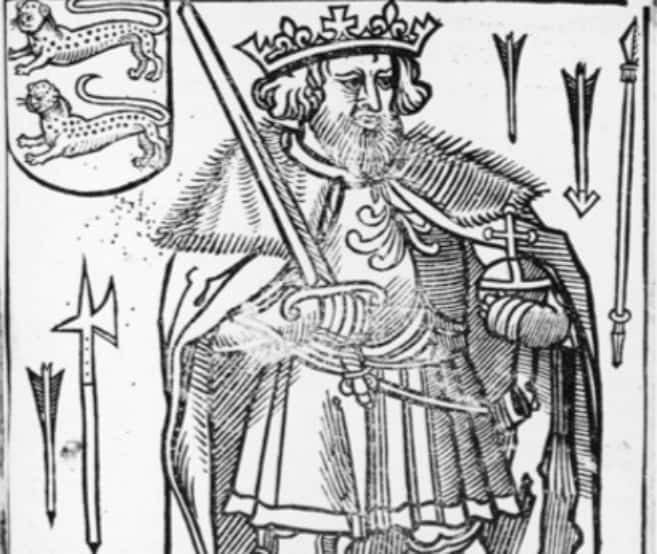
30. A Horse Finally Ended Him
After surviving countless battles and execution attempts, William passed after an accident with his rearing horse ruptured his intestines. An infection set in, and he lost his life several weeks later.
31. Explosive
After William passed from that infection from ruptured intestines, something even more disgusting happened at his funeral. When priests tried to stuff the corpulent king into his coffin, they pushed down on his abdomen, causing those intestines to explode everywhere. Not a end fit for a king, and it was about to get even more disgusting.
Reportedly, his loyal mourning subjects ran as fast as they could for the nearest exit when they caught a whiff of the putrid odor emanating from their dearly departed ruler.

32. So Many Titles, So Little Time
King Richard I was born on September 8, 1157, and was known by quite a number of titles and names during his life. He’s most well known today as Richard the Lionheart, but also would have answered to the French "Richard, Coeur de Lion". Wonderphil Entertainment, Richard The Lionheart (2013)
Wonderphil Entertainment, Richard The Lionheart (2013)
33. Forgive Me, Father
Richard was the spare’s spare, if you will. He was the third son born to his parents, Henry II and Eleanor of Aquitaine. Richard and his brothers weren't known for their great respect for dear old dad. They rebelled against their father in 1173 and 1174, when Richard was only about 16 or 17 years old. It didn’t really go all that great, though.
Richard and his siblings eventually surrendered, with his father pardoning Richard for his actions. The father-son family drama wasn't over yet, though: after further disagreements, Richard eventually allied with France to all but browbeat his father into naming him as heir to the throne of England. After that, Henry II promptly passed.
So it all worked out in the end, right?
 Youtube
Youtube
34. Mama's Boy
When Richard rebelled against his father as a teen, Henry II punished his young son in a brutal manner. Henry II had his own wife (and Richard's mother) Eleanor imprisoned. There were rumors that Eleanor had even encouraged her sons to rebel against their head of household, so her imprisonment may have been her own comeuppance.
However, Richard was a bit of a mama's boy, and Eleanor was also used as insurance and leverage to make sure Richard kept himself in line. She remained imprisoned until her husband's end.
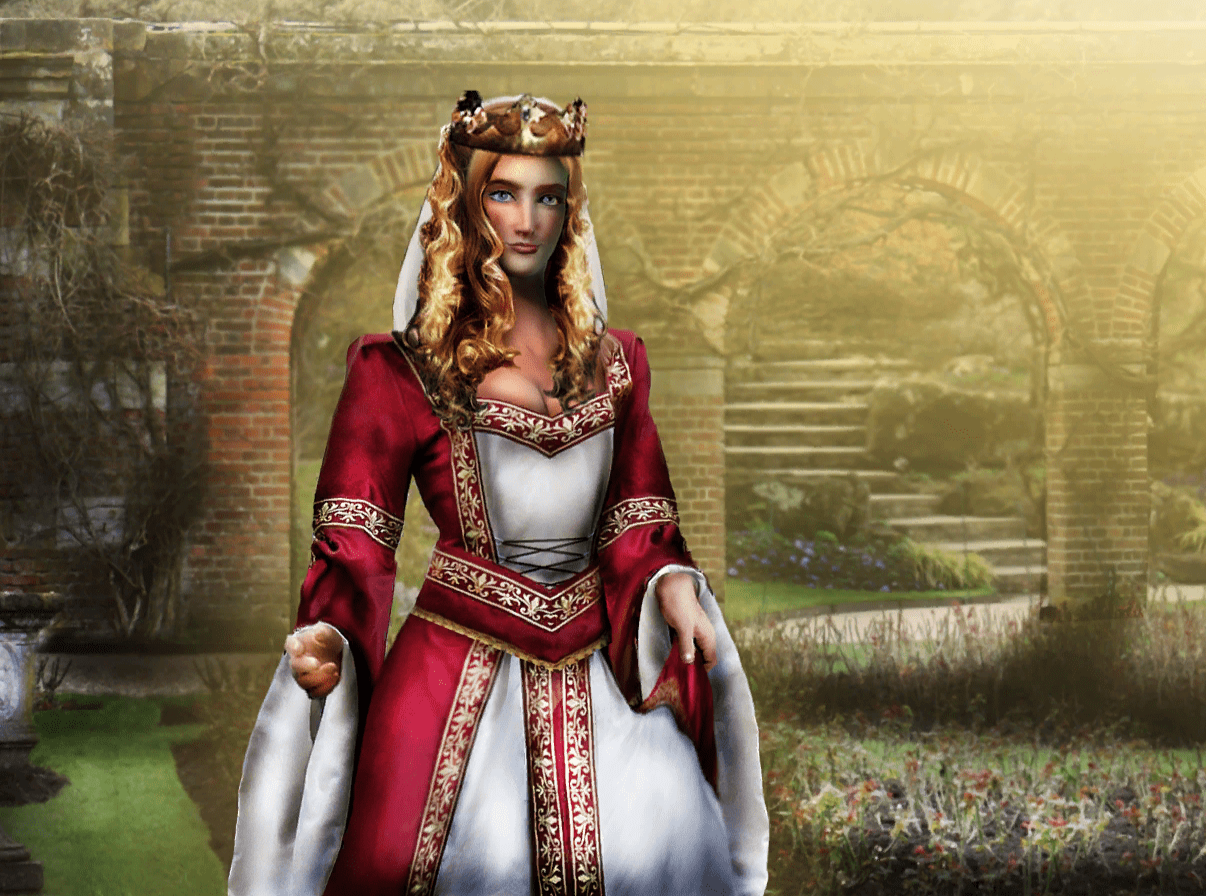 Civilization V Customisation Wikia
Civilization V Customisation Wikia
35. Baby Betrothal
Richard had actually been betrothed to a woman when he was only nine years old. His father managed to trick the French King into giving his daughter Alais as Richard’s intended. It would never come to be, though. Henry essentially just kept Princess Alais as a prisoner for 25 years, even going so far as to use her as his own mistress.
As per his wife Eleanor, Henry II's solution to pretty much everything seems to have been "imprison more women". 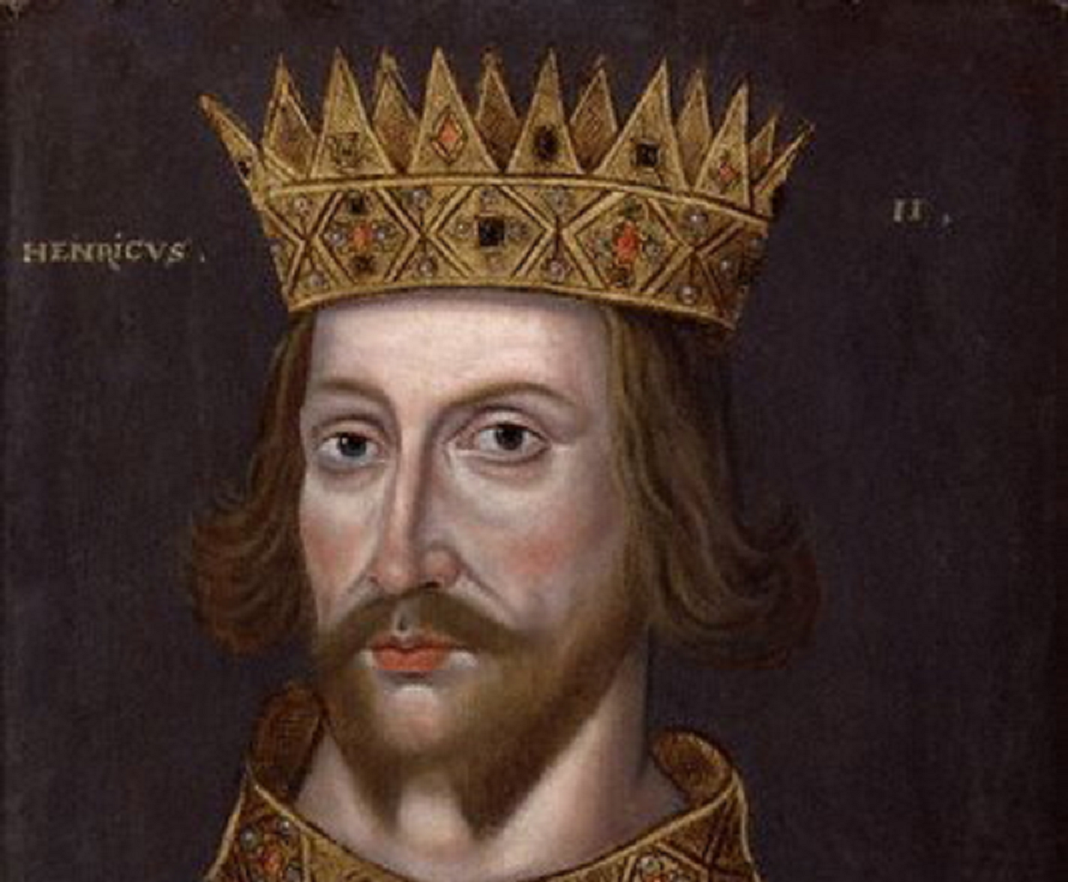 Unknown Author, Wikimedia Commons
Unknown Author, Wikimedia Commons
36. The King Is Gone
Richard, at only 41 years old, passed after a crossbow bolt snagged his left shoulder in 1199 during a castle siege. Once the bolt was ripped out, the wound quickly became infected. He passed just two days later—but his beloved mother Eleanor was able to make it to the site to see him before he ultimately passed. He passed in her arms.
 Youtube
Youtube
37. One Can Forget, if the Perished Do the Forgiving
Before his end, Richard summoned the man who had shot him; he turned out to be a mere boy. When asked why he had shot the King of England, this boy spat out that Richard had ended his father and brothers, and he was seeking his revenge. He thought he was facing certain execution, but Richard's final words to him were an act of mercy".
Live on, and by my bounty behold the light of day," the King said, forgiving the boy and sending him away with 100 shillings. Tragically, Richard's royal pardon may have been immediately betrayed: one source reports that a vicious captain named Mercadier went against the King's wishes, flaying the boy alive and hanging him in revenge.
Needless to say, this did not go as the dying Richard planned.
38. Do You Want a Piece of Me?
When Richard did pass, parts of his body went to different places. Gross, I know, but bear with me here. Richard was very specific about where certain parts were to go. His body, crown, and regalia were buried alongside his father in the royal abbey of Fontevraud, while his embalmed heart went to Rouen cathedral because of his profound love for Normandy.
Oh, but there’s more: his entrails were also sent to the region of Limousin to be buried.
39. Rebel, Rebel, Toil and Trouble
Richard may not have been the most loyal son or the most fiscally responsible king, but he was undeniably a army genius. His victory at the Battle of Arsuf during the Crusades is legendary, and his reign saw him easily batting back surges of rebel forces.
 Youtube
Youtube
40. Hello up There!
King Edward I of England was known as "Edward Longshanks". He was said to be 6’2", making him one of the tallest kings in English history. What can we say, the man's shanks were long!
41. Can Passed People Sue for Defamation?
By far the most famous film portrayal of Edward was the 1996 historical epic Braveheart. Irish actor Patrick McGoohan portrays Edward as a sinister tyrant against William Wallace and his Scottish army. Given the film’s historical inaccuracy, we can only imagine how Edward’s ghost reacted to the claim that he passed while listening to William Wallace screaming “FREEDOM!”
 Braveheart ,Paramount Pictures
Braveheart ,Paramount Pictures
42. It’s Not The Taj Mahal, But It’ll Do
In 1290, Edward’s beloved wife and queen, Eleanor of Castile,passed of sickness (it remains unclear which particular sickness it was). Overborne with grief, Edward ordered a series of 12 memorial crosses to be erected in her honor. Though only three of these survive today, they are still known as “Eleanor crosses,” and can be found at Geddington, Hardingstone, and Waltham Cross.
 Wikimedia Commons, Peter Broster
Wikimedia Commons, Peter Broster
43. Embrace Your Softer Side
Edward’s second wife, Queen Margaret, followed in the footsteps of her predecessor, Eleanor. She followed her husband on his army campaigns and she bore him several children, but unlike Eleanor, she actively softened his image and actions. In fact, she may have saved the lives of countless of Edward's subjects.
There were so many cases of Margaret convincing her husband to be merciful or lenient to those who angered him that the phrase “Pardoned solely on the intercession of our dearest consort, Queen Margaret of England” came into regular use.
44. Fighting Dirty
Edward was known for his fearsome temper, and he didn’t spare his own children from his wrath. His son and heir, also named Edward, once insisted that his father make Piers Gaveston, a favorite companion of his, into an earl. King Edward so infuriated by his son’s demand that he physically hurt his son, tearing out clumps of hair from his head.
Let's just say, loving father he was not.
 Braveheart ,Paramount Pictures
Braveheart ,Paramount Pictures
45. It’s a Mad, Mad, Mad World
Charles VI of France took power at 21, and things actually went well enough for a decade that he was called “the Beloved". But then, at the age of 32, mental illness took hold, he ended four of his knights and hurt his brother Louis of Orleans, and started believing he was made of glass and would shatter if touched.
He kept suffering from insanity until he went from Charles the “Beloved” to Charles the “Mad".
46. A Zany Inheritance
Henry VI of England was the grandson of Charles VI, and it looks like he may have inherited his grandfather’s disturbing mental instability. Unable to rule properly his entire reign, in 1453, Henry had a mental breakdown and fell into a vegetative state for over a year, leading to power struggles that led to the Wars of the Roses.
He was eventually overthrown, and passed in the infamous Tower of London.
47. You’re Welcome
Most people get rings or appliances as wedding gifts; Henry VII gave his wife un-bastardization. Elizabeth of York was the oldest living child of the late Edward IV, and presumptive heir to the Yorkists. Richard III had bastardized her and her siblings in order to seize the throne. Still, as an all-powerful king, Henry VII easily solved that little pickle.
Seeing as Henry needed his new wife’s legitimacy to help solidify his own hold on England, maybe we should see this legitimization as less of a gift and more of a “mift” (AKA a gift for “myself").
48. Celebrity Deaths Come in Twos
The year of 1502 began a rough spell for Henry VII. First, his son and heir, Prince Arthur, passed suddenly after only a few months of marriage to Catherine of Aragon. Then, Henry’s wife, Elizabeth of York,passed in childbirth just one year later. He shut himself away for several days, refusing to speak to anyone but his mother.
 George S. Stuart, CC BY-SA 3.0 , Wikimedia Commons
George S. Stuart, CC BY-SA 3.0 , Wikimedia Commons
49. Impalers Gonna Impale
Vlad the Impaler was known for, well, impaling things, usually people. Impalement was his favorite form of torment. If you have a favorite form of torment, you’re probably a bit insane. Vlad impaled a lot of people, too. Some would say too many people: Estimates are between 40,000 and 100,000 victims who befell Vlad's bloodthirsty wrath.
What's more, the fictional Dracula may have been based on the non-fictional Vlad.
50. How Terrible Is Terrible?
Ivan the Terrible was officially Ivan IV of Russia. Surprisingly, the word "Terrible" in its original Russian didn’t have the same negative associations that the English word has today. The Russian word, “grozny,” could be better defined as "dangerous" or "formidable" in its true meaning. That said, Ivan did some truly terrible things...
 Civilization V Customisation Wikia
Civilization V Customisation Wikia
51. You Win the Contest!
On the way to becoming ruler of Russia, Ivan participated in a ball from which he was to pick his first wife. Hundreds of potential brides were hurried into the Kremlin for their chance. Ultimately, Ivan went with Anastasia Romanovna, who became the first Tsaritsa of Russia—which would not necessarily be a desirable honor, given how things would turn out.
52. Russian, Not a Roman
Since Ivan wanted to impress on his subjects that he was the absolute ruler of Russia, he picked his new title wisely. "Tsar" is a Russian translation from the Latin word "Caesar," and we don’t need to tell you what that means, do we?
53. I Quit!
The 1560s brought on a serious change in Ivan’s behavior after all the tragedies he’d endured, coupled with the paranoia he felt against his own aristocracy. In December 1564, he shocked Russia by leaving Moscow and announcing his abdication, due to a conspiracy that threatened his life. This put his people in a terrifying position, since they were afraid of a peasant uprising (no idea why Russian nobles would ever fear such a thing).
They ultimately begged Ivan to come back and be their Tsar. Ivan agreed, on the condition that he become an absolute monarch with the power to basically do whatever he wanted. Things must have been pretty bleak, because his terms were accepted.
54. Rebound Remorse
A year after his first wife passed, Ivan married Maria Temryukovna, who was only 17 and perceived as illiterate. Ivan, however, was stricken by Maria's great beauty. The marriage was one of his least successful. Not only did their only child passed young—continuing a grisly trend when it came to Ivan’s offspring—but Maria was unpopular and unable to adjust to life in Moscow.
Upon her end in 1568, rumors abounded that Ivan had poisoned her, though it’s recorded that he went on a witch hunt to find out the true cause of her end, so the truth will never be known.
55. Classic Overbearing Mother-in-Law
Marfa Sobakina was the "winner" of 12 finalists to become the Tsar’s third wife. However, it was a case of the winner being the biggest loser. Marfa’s mother allegedly gave her a potion to make her more fertile. Unfortunately, the potion ended up contaminating her. She was so ill that she could barely stand on the day of her wedding, but the worst was yet to come.
The poor girl passed a few days later. In the midst of such a disastrous honeymoon, Ivan became more and more paranoid, even ordering his former brother-in-law to passed by impalement—eat your heart out, Vlad.
56.Ending Pain
Ivan was known for his bad temper. One theory for his uncontrollable mood swings and paranoia was the mercury that he began to take as a painkiller. The side effects of mercury would justify his unpredictable emotions.
57. Thus Passed the Terrible
In March 1584, Ivan the Terrible was quietly playing chess with a statesman in his home when he suddenly collapsed and became bedridden. Even today, it’s not fully known what caused him to be gone. An old theory was that he was poisoned, while many modern-day historians allege that it was a stroke.
58. If Ducklings Are Tiny Ducks…
Like so many monarchs before him, Ferdinand I of Austria was the product of inbreeding. His parents were double first cousins. Ferdinand was epileptic, encephalitic, and had problems with simple tasks. He is best remembered for his command to his cook: when told he could not have apricot dumplings (Marillenknödel) because apricots were out of season, his reply was ridiculous.
He said, "I am the Emperor, and I want dumplings!"
59. The Real Game of Thrones
Justin II of Italy spent the end of his reign rolling around his palace on a throne with wheels. The RollerThrone™ was designed by his servants, who needed to find a way to distract the king because he had a penchant FOR EATING THEM. Still, it sounds like a lot of fun.
60. Worst Monarch in History
England has had some terrible monarchs in its time, but according to history writers, King Henry VIII deserves the title of "worst monarch in history". Henry VIII took 20% of the vote for "worst monarch" in a survey by the Historical Writers Association, who polled 60 authors.
61. Flat as a Pancake
One of Henry VIII’s more gruesome ways of executing people was a method called "pressing," which essentially is crushing someone to the end. A large plank was held over the body of the prisoner, with weight being steadily added until they could no longer breathe. This was a long and drawn out way of ending someone.
To make it worse, the weights were added slowly to ensure maximum suffering.
62. Small World
It may seem like Henry VIII searched far and wide for a suitable wife, seeing as he infamously married six different women, but he didn’t look as far as you might think: Henry and each of his wives were all descended from King Edward "Longshanks" I, meaning that they were all cousins to one degree or another.
 Hans Holbein the Younger, Wikimedia Commons
Hans Holbein the Younger, Wikimedia Commons
63. He’s So Done With Her
In 1516, Queen Catherine of Aragon gave birth to Henry VIII’s first healthy child, Princess Mary. It ought to have been a happy occasion, but her failure to produce a boy disappointed him. Wikipedia
Wikipedia
64. Obsession
Henry VIII was consumed by his desire to father a son—something that proved famously difficult for him. Catherine of Aragon bore Henry six children in total, including two sons, but all but the future Queen Mary passed in infancy. Henry VIII was desperate for a male heir to secure the royal lineage, and he was none too happy.
Catherine's early "failure" to give him a son left Henry in a precarious position.
65. A Way out
There is a passage in Leviticus which states that a man who marries his brother's wife will be childless. Henry, on the advice of religious councilors, began to suspect that this piece of biblical "wisdom" was responsible for he and Catherine's hitherto unsuccessful union, since she had been briefly married to his brother Arthur before Arthur was gone.
Awful as it seems today, in the eyes of Henry and his scholars, his daughter Princess Mary just didn't count. So Henry began looking for a way out of the marriage. He petitioned the Pope for an annulment but was refused... laying the stage for what was to come.
66. Not the Momma
King Henry VIII’s interest in his next Queen, Anne Boleyn, was controversial, and not just because he was already married. Henry was already having an affair with Anne’s older sister, Mary. There were also rumors that her mother Elizabeth Howard had also been bedded by the King. Despite public accusations claiming the affair, the King denied it, stating “never with the mother” when challenged.
While this seems to let Elizabeth off the hook, it also more-or-less confirms Henry's affair with Mary Boleyn.
 Wikimedia Commons
Wikimedia Commons
67. No Permission Needed
Deeply enamored with (and now secretly married to) his mistress Anne Boleyn, who was pregnant, Henry finally decided that he didn’t need the Pope’s permission when it came to the Church of England. In 1533, the new Archbishop of Canterbury presided over the trial that declared Henry's first marriage to Catherine annulled, and his new marriage to Anne valid.
Henry would then declare that he, not the Pope, was the head of the Church of England, kicking off a little thing called the English Reformation.
 Wikimedia Commons
Wikimedia Commons
68. Begging to Get in
Catherine spent her final days as the image of Catholic piety. Though she had access to all of Kimbleton Castle, she remained in a single room, fasting and praying. Though she once said “I would rather be a poor beggar’s wife and be sure of Heaven than queen of all the world,” for the rest of her life, she continued to refer to herself as the Queen of England.
In all, Catherine of Aragon remained married to Henry VIII for 24 years. Their marriage lasted longer than all of Henry’s other marriages combined.
69. First of Her Name
The child Anne Boleyn was carrying would become Queen Elizabeth I, who would later become one of England's most famous monarchs in her own right.
70. No Love Lost
Anne Boleyn showed no lack of disdain for her predecessor, Catherine of Aragon. She refused to attend Catherine’s funeral, prevented Catherine’s daughter Mary from attending, and spent the day parading around the castle in bright yellow. Rumors spread that Anne had even threatened to end Catherine and her daughter Mary.
Catherine’s passed many to suggest that Anne had finally made good on her word. 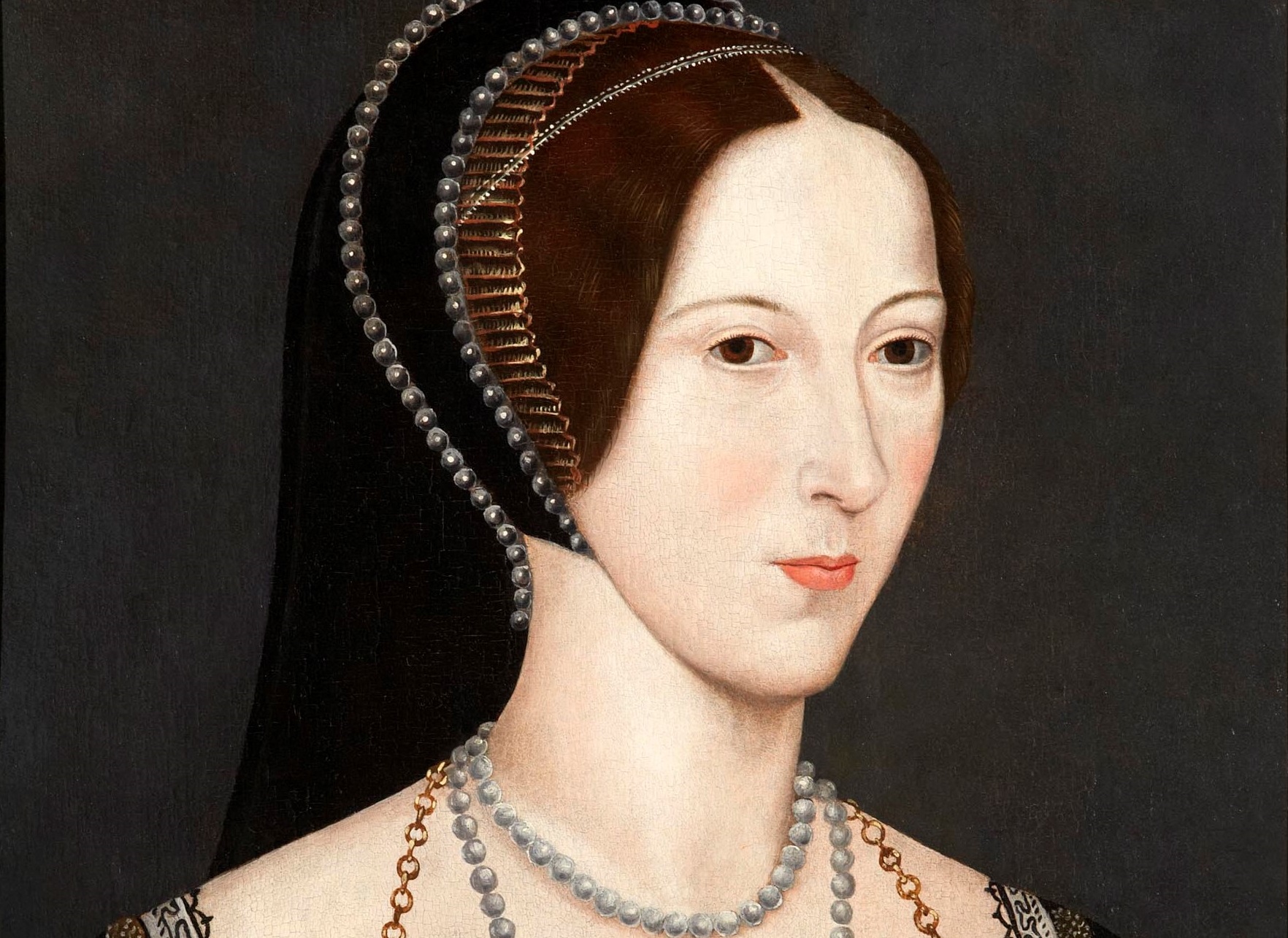 Wikipedia
Wikipedia
71. Goodbye and Yellow!
According the Imperial Ambassador Eustace Chapuys, Henry “honored” the end of his ex-wife, to whom he was married for over 20 years, by also dressing head-to-toe in yellow silks and declaring, “God be praised that we are free from all suspicion of battle !” since the divorce had put him at odds with Catherine's nephew, Emperor Charles of Spain.
Some people have tried to suggest that yellow is the Spanish color for mourning, but the verdict is still up in the air.
72. Mock Trial
No fewer than seven men were accused of carrying out affairs with Anne Boleyn, among them the poet Sir Thomas Wyatt, Henry’s friend Henry Norris, and Anne’s own brother, George. Virtually all denied the allegations or confessed under torment. Those coerced confessions were enough to have Anne condemned to end for adultery and treason.
Modern historians agree that the charges brought against Anne Boleyn that led to her execution were false and unconvincing, and that Henry had her ended just because she didn’t happen to have any male children, either.
73. High Spirits
Anne Boleyn was beheaded on May 19, 1536. She went to the block with surprisingly high spirits, cracking jokes about the length of her neck and referring to herself as “Lady Anne Lack-Head". When Anne was brought to the scaffold to end her, she begged leave to address the crown and was granted the right to do so. Despite the limited evidence against her, she said:
“Good Christian people, I am come hither to end my life, for according to the law, and by the law, I am judged to end my life, and therefore I will speak nothing against it. I am come hither to accuse no man, nor to speak anything of that, whereof I am accused and condemned to end my life, but I pray God save the king and send him long to reign over you, for a gentler nor a more merciful prince was there never: and to me he was ever a good, a gentle and sovereign lord. And if any person will meddle of my cause, I require them to judge the best. And thus I take my leave of the world and of you all, and I heartily desire you all to pray for me. O Lord have mercy on me, to God I commend my soul".
As she awaited the executioner’s blade, kneeling on the block, she repeated the phrase, “To Jesus Christ, I commend my soul; Lord Jesu receive my soul".
74. Is It Her?
Despite the careful planning that went into Anne Boleyn’s execution, little to no thought was given to what should be done with her remains afterward. Not having arranged for a coffin, her remains were allegedly put into an old arrow chest, and she and her brother were buried in an unmarked grave in front of the altar at the Church of St. Peter ad Vincula.
In an interesting twist, it turned out that five other beheaded women had been buried under the altar, and it had simply been assumed that the bones found in an arrow chest there were Boleyn's. There is also a theory that her relatives had her body secretly reburied somewhere else, which, based on that discovery, might have been true.
Without DNA testing, the truth will probably never be known.
75. Frenemies
Henry VIII's next wife, Jane Seymour, was not only Anne Boleyn’s lady-in-waiting, but she was also Anne’s second cousin. The two women had been close friends at Henry’s court until Anne noticed the necklace Jane wore. The necklace featured a small portrait of Jane’s lover—Henry VIII. This was obviously not good news for Anne Boleyn.
Anne angrily snatched the necklace from Jane’s hand, leading to what modern witnesses would probably describe as a “catfight".
76. Third Time's the Charm?
King Henry was not a man to waste time. Within 24 hours of Anne Boleyn’s execution, Henry was already engaged to his mistress, Jane Seymour. Seymour eventually gave him his long-desired son, Edward VI, but she passed two weeks after giving birth. She was the only of Henry’s six wives to be buried with him, and Henry considered her his first "true wife".
77. Which One?
King Henry VIII was a pretty heartless idiot, and as much as people have romanticized his great love for Jane, having a son and heir was always his number one priority. Jane’s labor was difficult, and when asked by an attendant whether he wanted to save the mother or child if it came down to it, his reply was absolutely chilling.
Henry supposedly replied, “If you cannot save both, at least let the child live," followed by the characteristic statement "for other wives are easily found". Priorities, right?  The Other Boleyn Girl (2008), Columbia Pictures
The Other Boleyn Girl (2008), Columbia Pictures
78. Renaissance Tinder
After Seymour's end from complications after giving birth to Edward VI, Henry VIII began the search for his next wife. In order to choose, Henry was sent paintings of possible partners. He chose Anne of Cleves over her sister Amalia, but was unhappy with his choice when he finally saw her in person. Apparently, she wasn't quite the looker he had hoped for.
He called her a “fat, Flanders mare,” and had the marriage annulled after just six months. At least she kept her head!
79. Off With Her Head!
16 days after annulling his marriage to Anne of Cleves, Henry VIII (now 49) married the 19-year-old Catherine Howard, who had been Anne of Cleves' lady-in-waiting. Less than a year into their marriage, rumors of her infidelity began, and after gathering evidence of her promiscuity, Henry had her executed in 1542.
 Wikipedia
Wikipedia
80. Haunting Screams
Allegedly, Catherine Howard did not take the news that she’d been detained for adultery and treason well. The 19-year-old Queen is said to have broken free from her guards at Hampton Court and run through what’s now known as the Haunted Gallery, screaming for Henry to show her mercy. She never made it to him, however—in fact, she would never see the king again.
According to legend, her ghost remains in the Haunted Gallery to this day, and people have often claimed to have heard her screams for mercy.
 Shutterstock
Shutterstock
81. Groom of the Stool
Some of the most important of Henry VIII’s attendants were his bathroom attendants. These men got the title “the Groom of the Stool,” and they helped dress and undress the king before and after going to the bathroom, and assisted with bodily functions and washing. Not just mere servants, all of Henry VIII’s grooms were actually knights, and their intimate relationship with the king made them highly influential members of the court.
In fact, Henry VIII kept his “Grooms of the Stool”—i.e. bathroom helpers—in strict confidence. It was to two of them, Sir Thomas Heneage and Sir Anthony Denny, that Henry disclosed that he didn’t think his fourth (supposedly ugly) wife Anne of Cleves was a virgin. But such intimacy with the king was a double-edged and smelly sword...
Henry also executed another groom, Sir Henry Norris, on trumped-up charges of adultery with his second queen, Anne Boleyn.
82. Outlived, Outlasted
Henry VIII’s sixth and final wife Catherine Parr managed to not only hang onto her head, she also outlived her husband. Catherine Parr also played a key role in restoring Mary and Elizabeth to the line of succession—after Henry had rendered them illegitimate by annulling his marriages to their mothers.
83. Maybe He Was a Fan of Tony Shalhoub?
Despite being known for his vigor and athleticism as a young man, Henry’s massive weight gain and the subsequent decline of his health finally caught up to him, and he passed in 1547 at the age of 55. His final words are not known for sure, but it has long been rumored that he cryptically cried, “Monks! Monks! Monks!” before his final breath left him.
 Shutterstock
Shutterstock
84. The Golden Boy
King Edward VI was not the “only” son of Henry VIII—he was just the only legitimate one to survive infancy. Edward’s lost brothers included Henry Fitzroy, the illegitimate son of Henry by his mistress, Bessie Blount; Fitzroy passed at the age of 17 just one year before Edward was born. By his first queen, Henry also had one legitimate son, Prince Henry, born in 1511, who lived long enough to get an elaborate christening as the Duke of Cornwall.
Alas, this kid didn’t live past a few weeks, paving the way for Edward some 26 years later.
85. Medically Fit to Rule
For centuries, historians and Tudor fans couldn’t resist the apparent irony of Henry VIII’s longed-for son also being his sickliest child. However, the legend of Edward VI’s delicate health has been widely discredited. Contemporaries described him as tall and quick-growing. While Edward did suffer from a serious fever at the age of four—and had somewhat bad eyesight—his private journals make no mention of long-term illness until the final six months of his life.
More scandalously, some suggested Edward inherited syphilis in the womb from his father. This has been largely debunked.
86. Mother From Another Marriage
Of his many stepmothers, Edward VI was closest to the last one: Catherine Parr. He once wrote to Parr, “I received so many benefits from you that my mind can hardly grasp them". Parr is considered instrumental in bringing the much-fraught royal family together.
87. Mourning Buddies
Edward VI and his sister Elizabeth I were together when they were informed of their father’s passing. The siblings apparently cried into each other’s arms when faced with their new life as true orphans. However, Edward’s journal would admit no hurt or personal reflection at the end.
88. Part-Timer
Edward VI ascended when he was only nine years old. His father Henry VIII passed in 1547, and Edward was officially crowned a month later. As if to highlight his age, the coronation was shorter than most, as people feared the long and boring procedures would be too taxing on their child-king.
89. Seal of Approval
Edward VI’s widowed stepmother Catherine Parr made a scandalous early marriage to the new king’s uncle, Thomas Seymour. However, Edward’s favor toward Catherine and Thomas let them get away with it. The king wrote a letter of approval about their marriage—though it was obviously dictated by Uncle Thomas for the little boy to write out.
90. In the Doghouse
Thomas Seymour's power struggle for King Edward climaxed with attempted child abduction and dog hater. By 1548, it was openly known that Seymour was leveraging his position as Lord High Admiral to gain his own personal allies in case of rebellion against his power. He did not show up to a hearing about his conduct. Instead, he showed up in the king’s bedroom at night to apparently take the boy and control the monarchy.
Unfortunately, all Thomas managed to do was shoot one of Edward’s precious dogs, thereby alerting the guards. Thomas was accordingly tried and executed for treason.

91. I Guess Blood Isn’t Thicker Than Water
Despite Edward’s early fondness for Thomas Seymour, the little king apparently showed no emotion as he signed his uncle’s end warrant. Can we blame him? The guy did shoot his dog.
92. Anyone But Her
By February 1553, Edward VI’s health was in critical condition. The teen was clearly not going to marry and father an heir anytime soon, but his heir was his Catholic half-sister, Mary Tudor. This would not do for the all-Protestant English government. As a devout Protestant, Edward himself opposed Mary’s ascension.
In the end though, like it or not, Mary became Queen Mary I of England.

93. Hello Darkness, My Old Friend
By the end of his life, Edward VI lost the ability to walk; the king’s legs were so swollen that he had to lie on his back all day. A realistic child to the end, Edward was ready to get it over with and told his tutor, “I am glad to be gone". He passed at Greenwich Palace on July 6, 1553—three months shy of his 16th birthday.
94. The Preschooler King
King Louis XIV inherited the French throne when he was only four years old. That’s why his reign was so long; he got a head start on rulership.
95. OTP: Me x The Crown
For a guy with serious commitment issues when it came to romance, Louis was truly married to the throne for the long-haul. At 72 years and 110 days, his reign is the longest of any monarch of a sovereign state in European history.
96. Big Ego, Big Style
The dogmatic, self-aggrandizing aesthetic of French classicism is so associated with Louis XIV and his absolute monarchy that it’s also called simply, “Style Louis XIV".
97. Fertile Seed But Feeble Roots in This Family Tree…
As apparent from his dozen or so illegitimate children (in addition to grandkids), Louis was good at making babies. Unfortunately, he was worse at outliving them. His only surviving legitimate son passed of smallpox in 1711. Measles claimed the lives of his grandson and great-grandson just one year later. Then things got even worse.
He had two other grandsons, but one passed in a hunting accident and then another was forced to abdicate his French claim in order to rule Spain. By the end of his life, only his sickly great-grandson remained to continue Louis’s legitimate line. This boy, the future Louis XV, inherited the throne at a young age—like Louis XIV himself—and reigned for 59 years from the age of 5.
We bet Louis was thankful for great-grandsons then!
98. Move Over Dorothy; Louis Wore Them First
As a lifelong fashionista, Louis promoted red-heeled shoes as the ultimate status symbol. For the next century, Louis’s red shoes remained a necessary finishing touch to any noble ensemble.
99. Le Petit Roi
The so-called Sun King did not cast a huge shadow: Louis was only 5 feet and 4 inches tall. Using a strategic combination of wigs and platforms, he made himself look almost 7 feet tall in public.
100. From Temp to Permanent Position
The most powerful mistress of Louis XIV was clearly Madame de Montespan. She rose to chief mistress (maistresse-en-titre) by cultivating a friendship with his current chief mistress, Louise de La Vallière. She then swooped in to “temporarily” fulfil her friend’s “duties” when both Louise and the queen found themselves pregnant.
To make rejection a little less embarrassing for La Vallière, Louis did (at first) keep Louise and Montespan in the same apartments, so he could visit Montespan without drawing suspicion. What a gentleman.
101. Rock Solid Excuse
In 1848, a piece of Louis XIV’s mummified heart was placed in a silver locket by Lord Harcourt and presented to the Dean of Westminster, William Buckland, who was also a geologist. Thinking the heart to be a rock (and curious to guess what mineral), Buckland promptly shoved the body part into his mouth—and accidentally ate it.
102. Peter the Ironic
Peter the Great of Russia was, according to many, a wonderful sovereign. He loved to learn, but sometimes he took that too far. While learning dentistry, for example, he practiced on his nobles. Apparently, he also ordered attendants upset about watching him dissect a body to take a bite from it. Fanatical about loyalty, when his son temporarily fled to Sweden, he had him tormented to the end.
Peter the Great, eh? Exactly who comes up with these names? Unfortunately, that's just the beginning when it comes to Peter...
103. Sharing Is Caring
Siblings are no strangers to sharing, even when it comes to the throne of Russia. Peter first came to the throne in 1682 as a 10-year-old co-Tsar with his older half-brother, Ivan.

104. Big Sister Is Watching You
Peter’s older half-sister Sophia served as Regent for most of his early reign. And she ran a very tight ship: Sophia drilled peepholes behind her brothers’ throne, where she would listen into their meetings and also whisper back information and responses they were to repeat verbatim. In other words, she was a literal backseat ruler.
105. I’m a Big Tsar Now
Eventually, Peter got sick of playing second-Tsar to his big sister. At the age of 17, he planned a coup against Sophia that ended in her deposition and exile to a convent. Peter and his other half-sibling, Ivan, however, remained allies and co-Tsars until Ivan’s passing. With Peter’s mother’s passing in 1694, Peter was 24 and finally ready to rule alone.
106. I Do, I Guess
At the behest of his mother, Peter the Great married the daughter of a noble family in 1689, when he was just 17 years old. The bride’s name was Eudoxia Lopukhina. They had three sons, and were by all accounts very unhappily married.
107. Never Gonna Give You up
Peter disliked his first wife Eudoxia from the start. He soon abandoned her for a Dutch mistress named Anna Mons, but the rejected Eudoxia would still send him letters begging for his nonexistent love. In 1698, after nine years of wedded torment, Peter ended his miserable marriage to Eudoxia Lopukhina and exiled her to a convent.
Lucky girl, right?
108. His Cup Floweth Over
While he was never a fully healthy man, Peter the Great's body took a grim turn for the worse in 1723. The following year, he had to get surgery that removed four pounds of blocked urine from his body. Since we’re talking 18th-century surgery, none of that sentence was fun for anybody involved.
109. We Won’t Water This Down for You
In the end, Peter the Great passed at the age of 52 on 8 February 1725. Sitting on the throne for 42 years, he left behind a great empire, and also a gangrene-infested bladder.
110. France Didn’t Ship It
In 1770, at the age of 15, King Louis XVI made his famous marriage to Marie Antoinette, his 14-year-old second cousin once removed. However, it was hardly considered something to celebrate among the French people. The Austrian alliance had pulled France into the unpopular Seven Years’ Battle, which led to France’s humiliating defeat by the British and Prussians.
The marriage to an Austrian princess was not a welcome reminder.
 Pinterest
Pinterest
111. Taking Their Time
Officially, Louis and Marie Antoinette didn’t consummate their match until three years after their marriage. At least, that’s what was reported. It’s more likely that they didn’t actually have intimate relations until 1777—a whole seven years after they wed.
112. Call Doctor House
Why did it take so long for Louis to “do the royal duty” with Marie Antoinette? Unlike Louis, the question still stands. In 1772, doctors suggested that the king suffered from phimosis—a medical condition that renders male arousal a painful experience. While surgery was recommended, it’s doubtful any procedure was performed, due to the risk.
113. A Little Help From My Bro
While medical reasons might have caused his bedroom issues, Louis’s performance woes were perhaps also rooted in a simple lack of contact. In 1777, shortly before the consummation, Marie Antoinette’s brother, Joseph II of the Holy Roman Empire, came to visit Versailles. In his journal, Joseph described his sister and brother-in-law as “complete fumblers” when it came to intimacy.
He advised Louis to “apply himself” more. Apparently, his advice worked, as Marie Antoinette immediately got pregnant.
114. Wheel of Fortune
A gifted craftsman, Louis once presented his wife with a spinning wheel. Considering Marie Antoinette averaged 200 new dresses a year, this was a fairly thoughtful and useful gift. The myth goes that she thanked him and then simply gave the wheel to her attendant. But, like, what else was she supposed to do? Make her own clothes?
115. Law-Abiding Citizen
On September 21, 1792, the National Assembly officially abolished the monarchy and declared France as a Republic. As a result, Louis XVI, then detained for treason, was a king no more. All his titles were revoked, and he was officially to be known as “Citizen Louis Capet". Although Louis was from the House of Bourbon, the Capets were the founding royal House of France.
Symbolism mattered more than accuracy in this case.
 Valerie et Jacques au musée Grévin
Valerie et Jacques au musée Grévin
116. I Hate Mondays
On Monday, January 21, 1793, “Citizen Louis” was led to the guillotine and beheaded upon the Place de la Revolution. By most accounts, his speech was dignified. He pardoned “those who are the cause of my end” while also declaring his innocence. His wife Marie Antoinette would soon follow him.
 Youtube
Youtube
117. Nothing Like a Souvenir
For centuries, it was told that citizens swooped in around Louis’s freshly guillotined body to dip their handkerchiefs in his blood, but generally, this tale was regarded as an urban myth. However, in 2012, a DNA test of preserved tissue samples proved this story to be true.
118. Unfortunately Loyal
Under the twisted politics of 18th-century France, Louis endangered his wife by not cheating on her. In the reigns before, lewd pamphlets would evenly distribute their political frustration between the queen and the king’s favored mistresses. While the Versailles kings before him were legendary womanizers, Louis XVI stayed loyal to his wife Marie Antoinette for their entire lives.
Unfortunately, his fidelity left no other woman in Louis’s life to blame for female influence. Thus, his queen bore the full brunt of anti-woman criticism that followed every king. This led to especially lewd pamphlets, and probably colored the enduring legacy of Marie Antoinette as a “cause” of France’s woes, as opposed to just a bystander to generations-old inequality.
119. Point Taken
According to legend, it was Louis XVI himself who suggested that a triangular blade would upgrade the guillotine into a more efficient ending machine. Eventually, he would get to test it for himself. Thanks, Louis!
120. Did He Try Communicating in Entish Too?
Throughout history, King George III became famous for his struggle with mental illness. Several accounts of George’s madness still exist, though we don’t know if they’re all true. George is said to have had episodes where “he became seriously deranged, sometimes speaking for many hours without pause, causing him to foam at the mouth".
One of the more extreme stories involved George confusing a tree for the King of Prussia and trying to shake hands with it.
121. Nice to Meet You
After several potential brides were turned down for one reason or another, George eventually married Princess Charlotte of Mecklenburg-Strelitz. Incredibly, the first time the two ever spoke to each other, or even laid eyes on each other, was their wedding day!
122. Come Back, Amelia!
George didn’t make it a secret that his youngest daughter, Princess Amelia, was his favorite child. After her tragic passing at just 27 years old, and during George’s bouts of insanity, George would often beg for her presence, speak to her as if she was in the room, or he would claim that she was visiting family members in Hanover.
123. Once to Be Safe, Twice for the Show
When George was born on June 4, 1738, he was actually premature by two months. Infant mortality back then meant that his parents were very worried that George might lost his life. As a result, he was baptized that very same day by Thomas Secker, the Bishop of Oxford. When George’s health had significantly improved, he was publicly baptized by Secker a month later.
 GettyImages
GettyImages
124. The King’s Breakdown
By 1810, George’s condition had worsened immensely. He was suffering from rheumatism, and cataracts left him nearly blind. After the Regency Period began in 1811, George developed full-blown dementia, was blind and deaf, and was unable to comprehend when his beloved wife passed in 1818. Perhaps it was a kindness when George himself followed her two years later, dying in 1820.
In the final few weeks of George’s life, to add insult to injury, he even lost the use of his legs.
 GettyImages
GettyImages
125. What’s the Culprit?
It remains unclear what sort of mental illness George suffered from in the latter part of his life. Based on his behavior, people have suggested bipolar disorder or porphyria. In 2005, one of George’s hairs was examined, revealing a surprisingly high amount of arsenic. What caused this level of arsenic to be present is unknown, but it has been offered as a cause of George’s mania.
 GettyImages
GettyImages
126. The Traveling Stranger
Though he was a pretty ineffective ruler, King Ludwig II of Bavaria’s popularity never wavered. He was broodingly handsome and frequently rode the countryside in disguise, giving gifts and large sums of money to the kindlier and more hospitable farmers he met along the way. To the Bavarians, Ludwig was the ideal romantic hero.
To those who really knew him, Ludwig's true nature was much darker.
 iCollector
iCollector
127. Break-ups Are Hard
In 1867, Ludwig became engaged to his cousin, Duchess Sophia of Bavaria. Sophia was the sister of his beloved friend, Elizabeth. After several postponements, the engagement was finally broken off in October of that year. While no reason was ever announced, Ludwig claimed in a letter to Sophia, “your cruel father has torn us apart!”
 Pinterest
Pinterest
128. King of the Castles
Ludwig II’s crowning achievement was Neuschwanstein Castle. Sitting at an elevation of more than 2,000 feet on a hill overlooking the village of Hohenschwangau, Neuschwanstein notably provided the inspiration for Sleeping Beauty’s castle at Disneyland. Construction of Neuschwanstein began in 1868, and was not completed by the time of Ludwig’s tragic end in 1886.
129. Short Stay
Despite the years and years of planning and labor, not to mention the incredible personal debt he accumulated, Ludwig only spent 11 nights in his beloved Neuschwanstein Castle.
130. By Unanimous Decision
Fearing for their ruler's health (and desirous of his power) after his castle spending spree, Ludwig's ministers ended up assembling a team of psychiatric assessors led by Dr. Bernhard Von Gudden, who quickly ascertained that Ludwig was mentally unsound. Though they never spoke with Ludwig personally, they compiled a list of observations that confirmed the king’s mental state.
The list included his habit of wearing a coat in summer but eating outdoors in winter, his rough manner with his servants, and, obviously, his exorbitant and reckless spending.
131. The Siege
With Ludwig declared mad, the ministers were free to depose him, and sent a commission to arrest Ludwig and place him in the custody of Dr. Von Gudden. Ludwig holed up in Neuschwanstein with a private army for two days while 36 armed guards surrounded the castle. He was finally caught trying to escape the premises.
When detained, he said to Von Gudden, “How dare you declare me insane? You’ve never examined me before!” Insane or not, Ludwig had a point.
132. The King's Closet
Ludwig never did marry and had no known mistresses. Close friendships with a number of men, especially with his chief equerry, led many to suspect that Ludwig was gay. Ludwig’s private diaries strongly suggest that Ludwig was indeed man lover, and reveal that he struggled to reconcile his orientation with his devout Catholicism.
133. French Kiss
At one of his residences, visitors could see the signs of Ludwig’s eccentricity turning into full-blown madness. He had a large statue of Marie Antoinette in the front hall whose cheek he would caress and kiss as he passed; servants often heard him from the other room, speaking with the statue. But that was really just the beginning.
Soon he began insisting extra places be set at his table to make room for French monarchs, and he started claiming that he was the heir to France through Louis XVI.
134. Absentee King
For such a short-reigning king, Edward VIII of the United Kingdom left behind no shortage of controversy. Tolerate or hate him, Edward VIII is certainly one of the most colorful European monarchs of the 20th century.
135. Typical
Edward and Wallis Simpson—the woman who would eventually force Edward to abdicate his throne—were introduced by Edward’s then-mistress, Lady Thelma Furness. At the time, Wallis had not fully divorced her second husband. For the record, Furness herself was also still married to someone else when she started dallying with the royal.
Guess it's safe to say that Edward had a type!
136. I Swear On My Coronet, Dad
When Edward and Wallis began their relationship in 1934, Edward insisted to his father that the affair didn’t exist. This was despite the fact that his father’s staff had caught the couple in bed together and saw “evidence of a physical sensual act". We doubt the king was convinced.
137. She Comes First
Edward became utterly enthralled with Wallis within the first year of being together. They were frequently seen together on vacation, and he bestowed tons in grants and gifts upon her. This escalated to the point where Edward missed out on important official duties.
 YouTube
YouTube
138. (Don’t) Meet the Parents
Edward caused family outrage by introducing his mother to Wallis at an evening get-together in Buckingham Palace. Divorced people were usually excluded from court functions, so this utterly enraged the current king.
 BBC
BBC
139. Holy Hypocrisy
It was more than a matter of manners—Edward’s affair with two-time (soon) divorcée Wallis Simpson was a matter of God. The ruler of England is also the head of the English Church, which poo-pooed marriage to a divorced person while their exes were still alive. Edward taking Wallis as his lover and wife would not sit well with the people, or their God.  Getty Images
Getty Images
140. Says Whom?
Within nine months of his reign, it was very obvious that Edward had every intention of marrying Wallis Simpson. After all, Simpson was finally divorcing her second husband. The American gossip rags went wild, but the British press stayed silent—treatment of the royal family is different there—so the British public was left in the dark for the rest of the year.
141. Nothing Says Love Like Negotiation
While it’s more romantic to think otherwise, Edward didn’t throw his crown away immediately when faced with the choice between his throne or Wallis Simpson. At first, he tried to negotiate with his ministers. In November 1936, he sat down with Prime Minister Stanley Baldwin and put forth his desire to marry Wallis.
When informed that the people would be wholly opposed to the match and never accept her as queen, Edward tried to compromise. Perhaps they would settle for a “morganatic marriage,” wherein he would stay king, Wallis would get a lesser title instead of being queen, and any kids could not be heirs to the throne?
Alas, even this was not good enough.
142. Choose Your Fate
Prime Minister Stephen Baldwin presented Edward with three choices: give up any notion of marrying Wallis Simpson, marry against the wishes of everyone, or abdicate his throne. But for Edward, giving up Wallis was not an option. Nor was marrying without Parliamentary permission—going against their wishes would force the government to resign and trigger a constitutional crisis.
In the end, what else could he do but ditch the crown?
 Simple Life Strategies
Simple Life Strategies
143. High-Frequency Resignation
On 11 December 1936, Edward announced on worldwide radio that he had surrendered his title and reverted back to being a mere prince. He said, “I have found it impossible to carry the heavy burden of responsibility and to discharge my duties as king as I would wish to do without the help and support of the woman I love,” and then left for Austria the next day.
144. Not Exactly a Royal Wedding
On June 3, 1937, Edward and Wallis finally married each other in a private ceremony in France. The Church of England refused to sanction the marriage, so a County Durham clergyman performed the vows.
145. Not Without My Wife
At least by their posh standards, Edward and Wallis didn’t live happily ever after. As per the deal in Edward’s new title, Wallis could not style herself as “Her Highness the Duchess of Windsor” even though her third husband was now the Duke. Edward would harass his brother with daily phone calls, asking for more money but also for George to reconsider Wallis’s style of address.
George VI eventually ordered his people not to forward the ex-king’s calls through. Wallis and Edward remained together, but thing weren't always rosy—they even dallied in fascism in the coming years.
146. These Are a Few of His Favorite Things
When King Tut’s tomb was unearthed, researchers found an iron dagger that was still remarkably sharp thousands of years later. Having a sharp dagger is not strange in itself, but the dagger’s origin is quite mysterious. Scientists have tested the metal and determined it came from a meteorite. This is remarkable, and also more than a little eerie.
The ancient Egyptians most likely didn’t have the technology to craft a weapon from meteorite debris, so it either came from another more advanced civilization or, as some are convinced, it might have been left behind by aliens.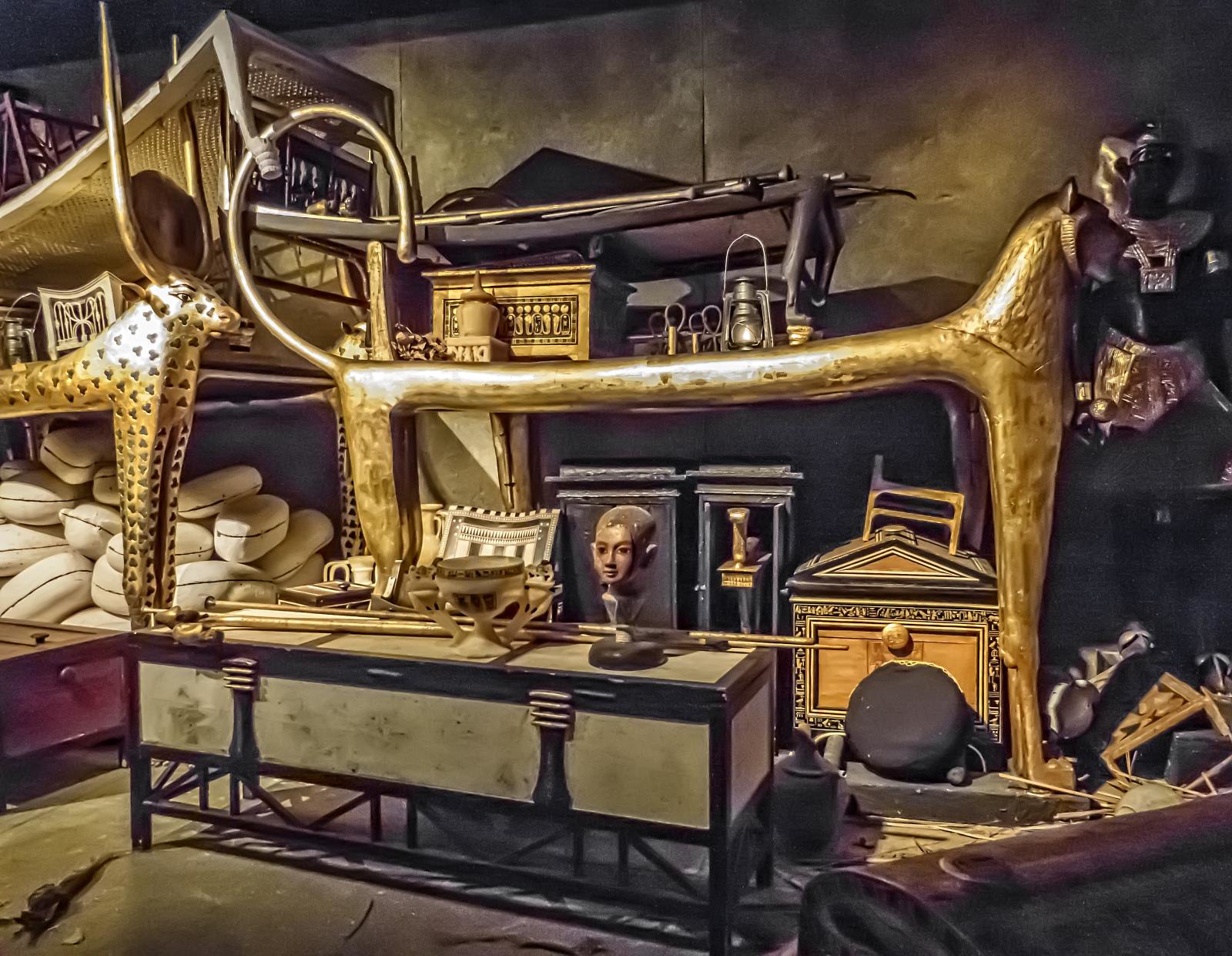 Mary Harrsch, Flickr
Mary Harrsch, Flickr
147. Disturbing Joke
Caligula had a malevolent sense of humor. Once at a dinner party, he reportedly burst into raucous laughter. When asked to explain the reason for his mirth, he replied, “I’ve just thought that I’ve only to give the word and you’ll all have your throats cut". Hilarious, right?!
148. Erased From History
By the time Caligula was gone, he was so hated that the Senate pushed to have him completely erased from Roman history. They ordered the destruction of his statues and public inscriptions, and his coins were pulled from circulation and melted down whenever possible.
149. Blaze It
The inscription above the grave of Jane Seymour, King Edward VI’s mother, laments her passing, but it also celebrates her sacrifice to give Henry VIII his heir: “Here lieth a Phoenix, by whose gone/ Another Phoenix life gave breath: / It is to be lamented much / The world at once ne’er knew two such". The Tudors (2007–2010), Showtime Networks
The Tudors (2007–2010), Showtime Networks
150. Imagine the Royal La toilette…
King Louis XIV had a stomach fit for a king. Upon his passing, it was found that his stomach was twice the size of an average human! Wikimedia.Commons
Wikimedia.Commons
151. Follicles in the Streets, Bald in the Sheets
King Louis XIV also owned over 1,000 wigs and 413 beds. Now THAT’s a thread count!
152. Cause of The End Unknown
To this day, the exact cause of Alexander the Great’s end is unknown. In 323 BC, he became ill after drinking a bowl of booze at a party, and two weeks later, he was gone. His father King Philip had passed at the hand of an assassin, and people began to suspect that Alexander himself had been poisoned. Naturally, the people surrounding Alexander became immediate suspects.
Poison or not, as best as modern science can discern, the most likely causes of his end could have been malaria, lung infection, typhoid fever, or liver failure.
153. Up for Grabs
But the plot thickens: When his father was ended back in 336 BC, some circles suspected that Alexander and his mother actually had a hand in his stabbing. With the throne now free for the taking, Alexander quickly eliminated any other enemies who stood in his path, murdering all other potential heirs to the throne with the help of his army.
His mother Olympia, meanwhile, helped Alexander’s quest by then ending King Philip’s daughter and leading his wife Cleopatra to commit self-immolation. In this case, maybe Alexander got what was coming to him in his end.
154. Head on a Spike
In 1532, Elizabeth Barton, a Catholic nun known as “The Nun of Kent” and “The Holy Maid of London,” began prophesying that Henry VIII's marriage to Anne Boleyn would result in his passing . In 1533, she was detained and forced to admit that she’d made everything up. Tragically, Henry was never one for mercy: She was executed for treason and hanged. But that was only the beginning.
Her head was also placed on a spike on London Bridge; she was the only woman to ever be given that "honor".
155. This Was a Test, and You Failed
Anne of Cleves was famously discarded by King Henry VIII, but there may be another side to the story. Anne’s first meeting with Henry was a diplomatic blunder: making their way to London, Anne’s party stopped on New Year’s Day 1540 at Rochester, where she took time to look at bull-baiting from the window. Suddenly, an old burly stranger entered the room.
Depending on the account, either this unkempt figure tried to get her attention and was politely ignored by Anne, or he outright tried to kiss and grope her, which understandably caused the young woman to ring the alarms. Unfortunately, the stranger was really Henry VIII in disguise. He had expected Anne to know her “role”—the maiden who could see through her chivalric suitor’s disguise via the power of “true love”…or something.
Anne was unimpressed, so, in emotional self-defense, Henry may have decided to be unimpressed with her.
156. My Son, My Son, What Have I Done?
On the 15th of November, 1581, Ivan the Terrible finally lived up to his name in the most gruesome way imaginable. At first, everything seemed like it was going right: his son's wife was pregnant with a soon-to-be grandchild and he was ruler of all Russia. But then Ivan witnessed his pregnant daughter-in-law wearing clothes that he determined to be less-than-appropriate.
He proceeded to physically assault her until his son Ivan Jr. heard her screams and accosted his father. Things had already gone way too far, but then Ivan Sr. struck his son’s temple with his scepter in a fit of rage. The head wound proved fatal, much to Ivan Sr.’s horror. He had ended his son and heir, the man who was to succeed him to the throne.
This, coupled with his daughter-in-law’s miscarriage due to the attack, immortalized Ivan’s image as a mentally unstable tyrant capable of ending his own children and ruining his line.
157. Don’t Play With Certain Friends…
When King Philip of France (“Philip the Fair”) discovered his three daughters-in-law were having intimate relations with knights from his court, he forced his daughters to stand trial for adultery. Two of the daughters were found guilty. They had their heads shaven and were sentenced to life imprisonment. But the knights suffered an even darker fate.
The knights were found guilty, and were subject to a gruesome aggression and execution: they were castrated, flayed, disemboweled, and hanged.
158. Whodunit
On the evening of June 13, 1886, King Ludwig of Bavaria and his doctor Von Gudden took a walk together along the shore of Lake Starnberg. No one knows what happened next. The bodies of Ludwig and Von Gudden were found that night floating in the lake. Neither had water in their lungs, but Von Gudden’s body showed signs of strangulation and bludgeoning.
The mystery has never been solved, though modern historians suggest that Ludwig and his doctor may have been ended by Ludwig's enemies while he was attempting once more to escape.
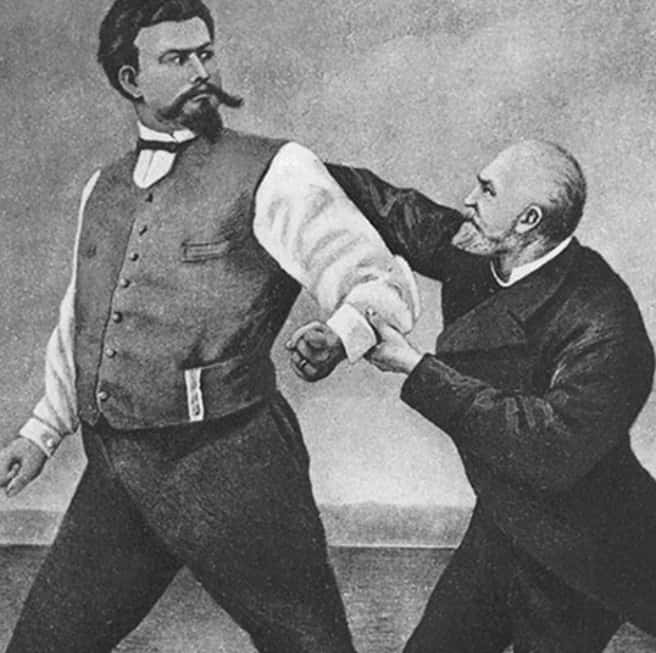 Munich et la Bavière, Louis II et Richard Wagner
Munich et la Bavière, Louis II et Richard Wagner
159. The Nanny Diaries
One of Edward VIII’s early nannies was fired for physically hurt him and his siblings. Every time he would be presented to his parents, the nanny would pinch him to tears. This would make the visits brief, as the wailing would send his royal parents away. This behavior was discovered, and the governess was promptly dismissed.
 Getty Images
Getty Images
160. Bad at Bereavement
King Edward VIII’s reaction to the end of his youngest brother, Prince John, put a rank taste in people’s mouths. John, who was 11 years younger than Edward, passed in January 1919 from a severe seizure when he was only 13 years old. Edward referred to John’s passing as “little more than a regrettable nuisance".
He wrote how John’s epilepsy had limited his mobility such that people rarely saw him, calling his late brother “more of an animal than anything else". Apparently, Edward’s insensitivity reached his mother, Queen Mary. Edward ended up having to write an apology letter to his grieving mom for being “a cold-hearted and unsympathetic swine”—Edward’s words, not mine.
But could you ever forgive him?
Want to know more about history's most unhinged monarchs? Check out our facts about Ruthless Queens.
Sources: 1, 2, 3, 4, 5, 6, 7, 8, 9, 10, 11, 12, 13, 14, 15, 16, 17, 18, 19, 20, 21, 22, 23, 24,25, 26, 27, 28, 29, 30, 31, 32, 33, 34, 35, 36, 37, 38, 39, 40, 41, 42, 43, 44, 45, 46, 47, 48, 49, 50, 51, 52, 53, 54, 55, 56, 57, 58, 59, 60, 61, 62, 63, 64, 65, 66, 67, 68, 69, 70, 71, 72, 73, 74, 75, 76, 77, 78, 79, 80, 81, 82, 83, 84, 85, 86, 87, 88, 89, 90, 91, 92, 93, 94, 95, 96, 97, 98, 99, 100, 101, 102, 103, 104, 105, 106, 107, 108, 109, 110, 111, 112, 113, 114, 115, 116, 117, 118, 119, 120, 121, 122, 123, 124, 125, 126, 127, 128, 129, 130, 131, 132, 133, 134, 135, 136, 137, 138, 139, 140, 141, 142, 143, 144, 145, 146, 147, 148, 149, 150, 151, 152, 153, 154, 155, 156, 157, 158, 159, 160, 161, 162, 163, 164, 165, 166, 167, 168, 169, 170, 171, 172, 173, 174, 175, 176, 177, 178, 179, 180, 181, 182, 183, 184, 185, 186, 187, 188, 189, 190, 191, 192, 193, 194, 195, 196, 197, 198, 199, 200, 201, 202, 203, 204, 205, 206, 207, 208, 209, 210, 211, 212, 213, 214, 215, 216, 217, 218, 219, 220, 221, 222, 223, 224, 225, 226, 227, 228, 229, 230, 231, 232, 233, 234, 235, 236, 237, 238, 239, 240, 241, 242, 243, 244, 245, 246, 247, 248, 249, 250
































